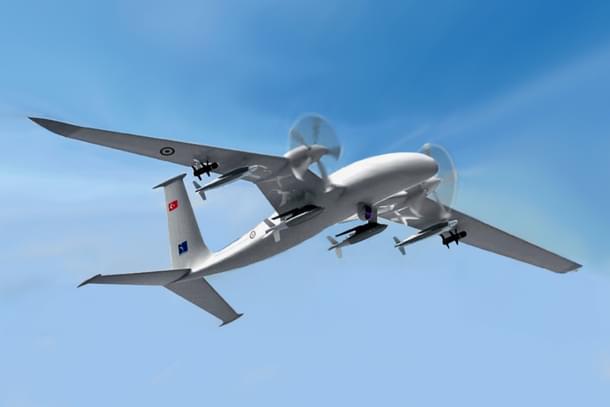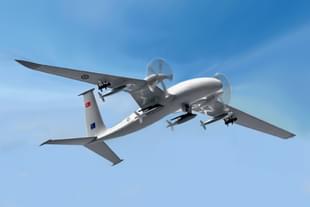Defence
While India's UAV Programme Falters, Pakistan Air Force Inducts Yet Another Turkish Drone
Ujjwal Shrotryia
Apr 03, 2023, 03:46 PM | Updated 03:46 PM IST
Save & read from anywhere!
Bookmark stories for easy access on any device or the Swarajya app.


In a significant move aimed at enhancing its strategic capabilities, the Pakistan Air Force (PAF) has recently taken delivery of the cutting-edge Akinci unmanned combat aerial vehicles (UCAVs).
Despite the economic turmoil currently being experienced by the Pakistani economy, characterized by its imminent risk of default and the stalled discussions with the International Monetary Fund (IMF) regarding a $7 billion bailout package, Pakistan has taken delivery of Akinci UCAVs.
The precise quantity of drones included in the aforementioned package remains undisclosed. Developed by Turkey's Baykar Defense, these advanced drones will bolster the PAF's aerial reconnaissance and strike capacities.
This acquisition is in line with the PAF's ongoing efforts to modernize its arsenal and maintain its edge in the region.
Pakistan has earlier received drones from Turkish Baykar Defence — Bayraktar TB2 drones, as well.
The Akinci UCAV is a state-of-the-art combat drone with several impressive features. With a wingspan of 20 m and a maximum take-off weight of 5.5 tons, the Akinci can carry more than 1.35 tons of payload, comprising a combination of guided bombs, missiles, and other munitions.
Its advanced sensors and radars enable it to operate autonomously, while its satellite communication system ensures seamless command and control over vast distances.
Powered by two Ukrainian AI-450T turboprop engines, the Akinci drone can achieve a maximum speed of 195 knots and has a range of more than 6,000 km. With an operational altitude of 40,000 feet, the drone can stay airborne for up to 24 hours, providing unparalleled endurance and mission flexibility.
The Akinci UCAV can carry MAM-L, MAM-C, MAM-T and stand-off (SOM-A) cruise Missile.
Last year (October 2022), it was reported that about 44 PAF personnels have completed training to operate Akinci drones.
India is also developing its own high-altitude long endurance UCAV (HALE) called Archer-NG. It will be based on the technologies developed during the long-delayed Tapas UAVs development.
India started its long-endurance UAV development program in the early 2000s with a target for induction in 2016. However, the program suffered significant delays, resulting in the Tapas UAV's first flight taking place only in 2016.
It took another five years (until 2021) for the Tapas UAV to achieve an altitude of 28,000 feet with an endurance of 18 hours. In July 2022, the government ordered HAL to manufacture six Tapas UAVs for evaluation trials.
It was only earlier this year, in February 2023, that the UAV was unveiled at Aero India 2023.
India in the meantime as a stopgap uses Israeli Heron-TP drones for its long-range surveillance roles. India is also planning to buy eighteen MQ-9B Sea Guardians UCAV from the United States as well.
Both these UCAV are able to carry laser-guided missiles, as well as, bombs with the capability to destroy static/moving enemy targets.
Staff Writer at Swarajya. Writes on Indian Military and Defence.




